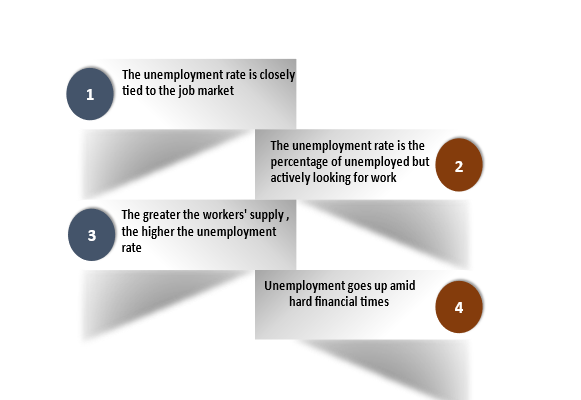What is the job market?
The job market is a crucial component of every economy, and it is directly tied to product and service demand. It is a place where employees look for employment and employers look for workers. It is also called the labour market. It is not a geographical location but a concept that depicts the competitiveness and interplay between various labour forces.
Depending on the available supply of workers and the demand for labour in the broader economy, the job market might shrink or grow. The needs of a particular industry, the demand for a specific skill set or education level and needed job responsibilities are all elements that influence the market.
Instead of a physical marketplace, a job market is a place where the labour force's demand (businesses) and supply (those actively looking for employment) interact. Factors such as industrial developments, economic activity, levels of education, the need for specific skill sets and so on. For instance, demand for computer engineers having strong programming skills continues to rise in the rapidly expanding information technology sector.
Furthermore, the state of job markets reflects the overall economic state and trend of the economy from a macro perspective. From a micro-perspective, knowing the job market has benefited individuals in assessing their career plans and increasing their competitiveness.
Highlights
- A job market is a place where employees hunt for jobs and employers seek workers.
- The employment market may decrease or expand depending on the available supply of workers and the demand for labour in the broader economy.
- The unemployment rate, which measures the percentage of unemployed yet actively looking for work, is closely tied to the job market.
Frequently Asked Questions (FAQs)
What is the meaning of the word "job"?

Source: © Skypixel | Megapixl.com
JOB stands for "Joining Others Business" in its full form. A person's place in society is defined by his or her employment. A job, more appropriately, is an activity that is often performed on a regular and frequent basis in exchange for payment.
In addition, a job is the type of work done to earn money to meet fundamental human needs. It might be part-time or full-time, and it could be for a short period. Instead of a salary with benefits, one could earn an hourly wage.
What is the importance of a job market?
Wage levels set by the labour market are a crucial indication for economists and policymakers. But, more importantly, by job creation and cycling cash through the economy via wages, the job market promotes economic growth.
Job prospects, like any other market, have a demand and supply, which impacts pay and wage levels. The level of unemployment influences labours demand and supply in a given economy.
However, a high unemployment rate reduces payroll since more job applicants are competing for fewer available employment. On the other hand, a low unemployment rate puts upward pressure on salaries because firms compete for a fewer number of job searchers.

Source: © Anusorn62 | Megapixl.com
What is the function of a job market?
The demand-supply mechanism governs job markets in the same way that it regulates services and products markets. The job market reaches equilibrium when the workforce required (demand) equals the number of workers available (supply), and salaries can be established.
Salaries rise when demand for employees outnumbers supply, and wages fall when supply outnumbers the demand. On the other hand, wages do not always fluctuate freely. The government frequently establishes a boundary, which is termed as minimum wage.
Whenever the equilibrium wage is higher than the minimum wage, imposing a minimum wage has no impact on the labour market. However, suppose a minimum wage is set at a greater level than the equilibrium wage. In that case, the quantity of demand falls as businesses strive to manage labour expenses by lowering the number of employees.
As a result of the greater income level, there are more active job seekers increasing. As a result, there is a supply-demand imbalance, which leads to unemployment. Despite this disadvantage, the minimum wage regulation has the potential to help both socially and economically. By raising the earnings of low-wage workers, the government can reduce its expenditures on social programmes to help these people while also reducing economic inequality.
How is the unemployment rate linked to the job market?
The job market has a strong influence on the unemployment rate. The unemployment rate in the labour force is the percentage of unemployed but actively looking for work. The greater the workers' supply in the entire job market, the higher the unemployment rate.
Employers might be choosier or bring down salaries if they have a broader pool of applicants to choose from. But, on the other hand, employers are compelled to fight more fiercely for available workers when the unemployment rate falls.

Source: Copyright © 2021 Kalkine Media
Moreover, economic analysts and those who establish public policy based on financial health benefit from wages defined by the job market.
Unemployment increases amid hard financial times because firms may lower their workforce levels and generate fewer new jobs, making it more difficult for people looking for work. High unemployment rates can extend economic stagnation, or a period of little to no development in an economy, and contribute to social unrest, resulting in the loss of many people's ability to live comfortably.
 Please wait processing your request...
Please wait processing your request...